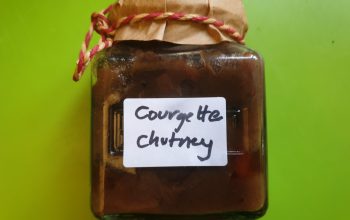National preserving week 2022
July 23, 2022

July 25th to 1st August is a whole week dedicated to encouraging people to preserve their own foods.
Food preservation at its most basic is doing something to food in order to keep it in an edible state for longer, it’s about making sure our food is safe to eat and available when we want to eat it.
For better or worse, preserving food can also alter its flavours, textures and even the amount of nutrition available to our bodies too, so having knowledge of how preservation affects different foods is a good way to bring variety to your diet.
There are a wide range of food preservation techniques available, ranging from storing bread in a cool dark place to prevent it going stale, through to lacto-fermenting your own kimchi.
We’ve put together a collection of links to helpful websites and instructional videos where you can learn more about some of the different food preservation techniques you could try at home during national preserving week:
Websites
- Storing your foods in the right place is the simplest way to prolong their useable life. This A to Z guide form Love food hate waste contains advice on how to store 74 different foods: https://www.lovefoodhatewaste.com/article/food-storage-a-z
- The Full Freezer is a website designed to help on those occasions where you ask yourself “Can I freeze it?”. It covers a wide range of common kitchen staples, through to more unusual freezer candidates (yes, you can freeze crisps): https://www.thefullfreezer.com/canifreezeit
- How to dehydrate food without a dehydrator: https://food-hacks.wonderhowto.com/how-to/dehydrate-food-without-dehydrator-0161531/ a quick guide on how to dehydrate a range of foods in the sun, or using an oven, grill and even your microwave.
Videos
Open university: Seven wonders of the microbe world: Gives a simple overview of why food ‘spoils’ and some of the basic preservation techniques available for slowing down the spoilage process.
Jam making video: BBC Good Food run through simple jam making using soft fruits.
Fermenting vegetables: Two videos featuring simple guidance on fermenting almost any vegetable, and another with specific recipes for making sauerkraut, sriracha, kimchi and kvass
Freezing: Some simple tips for freezing fresh fruit and vegetables, whether home grown or shop bought
Canning: A step-by-step guide to water bath canning / bottling a wide range of fruits and vegetables
Pickling: An uncomplicated guide to pickling (almost) anything
Chillis in oil: How to preserve chilli peppers in oil to use later
Tomatoes in oil: How to preserve tomatoes in oil at home
Chutney: Mary Berry’s recipe for home-made chutney, can be adapted to suit the fruit and vegetables you have available either home grown or shop bought.
Home made yogurt: Hugh Fernley-Whittingstall runs through how to turn excess milk into yogurt
Why you should try preserving your own foods
For much of human history, people foraged for, or grew and then preserved much of the food they accessed themselves. Almost everyone needed some knowledge of food preservation techniques to survive the hungry periods in-between harvests.
We now access foods from across the globe and are slightly less constrained by the seasonality of crops, but we’re just as reliant upon food preservation techniques to ensure our foods remain edible by the time they get to us. This means a lot of the preservation is now done for us by someone else.
Letting someone else handle the preservation of our food is convenient, but it has some downsides too. It’s certainly led to a loss of knowledge and skills in how to prolong the useable life of the fresh and seasonal foods that we do have access to; whether we’ve bought them fresh from the supermarket of grown them ourselves. That lack of knowledge and skills can lead to unnecessary waste and expense, and it means were often ill equipped to take advantage of cheap, fresh local foods when they are available in abundance.
National preserving week presents an opportunity to learn more about the wide range of food preservation techniques available to us at home, to rebuild food preservation knowledge and skills and regain a bit of control over our foods, and our food waste. It’s also an opportunity to learn and experiment with the ways that preservation techniques alter the flavours and textures of foods too.










